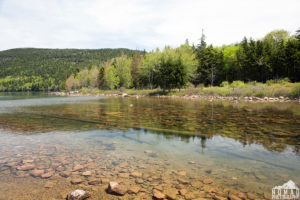Living in Maine is synonymous with adventuring outside. As a Maine resident, you have most likely done, or at least know of someone who has done, one of the following: hiked from a local trailhead, canoed along the Kennebec River, climbed Katahdin, or day-tripped to Acadia National Park. All of these activities are quite commonplace, but for Black, Indigenous, and People of Color (BIPOC) who collectively make up less than 5% of Maine’s population, this is not necessarily the case. According to a 2016 Study by the Outdoor Foundation, only 9% of outdoor recreation participants are Black, 8% are Hispanic, and 7% are Asian or Pacific Islander. The outdoors have often been deemed “color-blind” because nature is considered to treat people of all races equally, but the reality is that there are multiple barriers to racial equality in the outdoors.
The most common obstruction to inclusivity is accessibility. Time and travel funds are privileges that leave behind low-income populations who often do not have the luxury of taking time off from work to engage in outdoor activities, nor the transportation to get to Maine’s state parks or other natural areas. Accessibility also applies to the gear necessary to participate in certain outdoor activities, which can be expensive to purchase or even rent. A report in 2018 revealed that 20.8% of Black people and 17.6% of Hispanic people are below the poverty line–compared to only 10.1% of white people–illustrating the fact that BIPOC have fewer resources to participate in the outdoors.
Disturbingly, minority visitors to parks and public lands also have to contend with issues of safety and perceived safety. Recent events illustrate the marginalization of Black people in the outdoors, as seen with Christian Cooper having the police called on him while bird watching in Central Park or Ahmaud Arbery being murdered while on a run in his own neighborhood. Most white Mainers have the privilege of considering the outdoors to be a place of peace and refuge in which one can freely explore. However, the outdoors are often transformed into a vulnerable place for BIPOC to visit. As long as the institutional systems of racism are in place, BIPOC will not be able to enjoy and access the outdoors like white folx. Additionally, the perceived safety of the outdoors is influenced by the history of violence against BIPOC, especially women. In a narrative of her journey along the AT from Georgia to Maine, Black hiker Rahawa Haile explains how one hiker of color she met along her journey insisted on carrying a machete for safety reasons. The perceived risk of confronting racist hikers or townspeople while hiking the AT deters many BIPOC hikers, once again limiting their participation in outdoor recreation. While individual racism is a problem that must be fixed, greater systems of white supremacy must be dismantled to make change.
The barrier of knowledge is another way BIPOC are limited in understanding where to hike or what outdoor experiences are available near them. This notion of summiting the tallest mountain as being the only way to be a true outdoors person is a misconception that might keep people from enjoying local hikes or even gardening in their backyards. The media also plays a role in this by creating the image of white people hiking and canoeing as the ideal way to have fun in the outdoors. Outdoor retail companies primarily promote photos of white people wearing their gear and laughing around a campfire. Movies only focus on white males going on risky adventures, like the recent film Free Solo. All of these actions limit BIPOC role models and reduce this population’s participation in the outdoors. The lack of BIPOC representation in the conservation movement is not an accident, however; years of alienation of Black and brown people from the outdoors has existed for decades. John Muir glamorized the relationship between Indigenous people and nature, while simultaneously describing them as dirty. Gifford Pinchot was on the board of the American Eugenics Society. As hiker Amath Diouf states: “The lack of diversity, equity, and inclusion in the present day conservation movement is a clear indicator of its failure to accept responsibility for its racist origins.”
Rahawa Haile, a black hiker from Oakland, CA asks: “Who is wilderness for?” I have taken time to reflect on this question, and have come to understand that as a white environmentalist, my access to and participation in the outdoors is a privilege. I, and anyone in a similar position as myself, have an obligation to become a better ally and to eliminate the barriers to the outdoors for BIPOC because everyone should have the ability to enjoy and engage in the beauty of Maine’s outdoors. There is still so much more to uncover about the history of the wilderness and how I can become a better ally, and I hope that readers will join me on this journey of unlearning, relearning, and growing. The list of resources below, inspired by social media posts and my own research, is incomplete but a good starting place in learning how to be an ally in the outdoors.
I am grateful for the support of the Buck Lab for Climate and Environment at Colby College.
